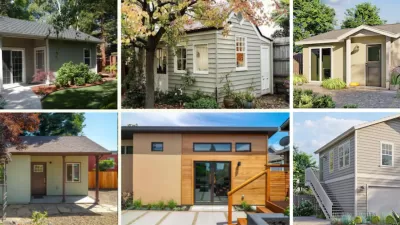Aging in place means fewer homes for young homebuyers, according to a new report by Redfin.

"Americans are staying in their homes much longer than before, creating a logjam of housing inventory off the market that helps explain why home sales have been sputtering," reports Laura Kusisto in a paywalled article for the Wall Street Journal.
Kusisto is sharing news about the findings of a recent analysis by Redfine, which is also published online. The report finds that the typical U.S. homeowner stays in their homes for 13 years, five more years than reported in 2010.
"In Salt Lake City, Houston, Fort Worth, San Antonio, and Dallas homeowners have been in their homes the longest, with typical homeowners in those metros staying in their homes over eight years longer than they did in 2010," according to an article by Daryl Fairweather on the Redfin website. "In many metros that has led to fewer homes available for first-time homebuyers."
Fairweather also lists a comparison of median home tenure in 2010 and 2019 for all 55 metros included in the Redfin analysis. Home tenure increased in all 55 metros, in cities as disparate as Salt lake City, Baltimore, Fort Worth, and Oakland, California.
The list also provides information about the number of homes for sale and median sale prices. Thus, both Refin and Kusisto present the findings of the report with a narrative that complicates thinking about the "aging in place" approach to senior housing, by connecting aging in place with rising housing costs. Fairweather uses San Francisco as a case study of a city where homeowners are staying in place longer than in previous decades, there are fewer homes for sale, and the homes that are for sale are much more expensive.

Alabama: Trump Terminates Settlements for Black Communities Harmed By Raw Sewage
Trump deemed the landmark civil rights agreement “illegal DEI and environmental justice policy.”

Planetizen Federal Action Tracker
A weekly monitor of how Trump’s orders and actions are impacting planners and planning in America.

Why Should We Subsidize Public Transportation?
Many public transit agencies face financial stress due to rising costs, declining fare revenue, and declining subsidies. Transit advocates must provide a strong business case for increasing public transit funding.

Understanding Road Diets
An explainer from Momentum highlights the advantages of reducing vehicle lanes in favor of more bike, transit, and pedestrian infrastructure.

New California Law Regulates Warehouse Pollution
A new law tightens building and emissions regulations for large distribution warehouses to mitigate air pollution and traffic in surrounding communities.

Phoenix Announces Opening Date for Light Rail Extension
The South Central extension will connect South Phoenix to downtown and other major hubs starting on June 7.
Urban Design for Planners 1: Software Tools
This six-course series explores essential urban design concepts using open source software and equips planners with the tools they need to participate fully in the urban design process.
Planning for Universal Design
Learn the tools for implementing Universal Design in planning regulations.
Caltrans
Smith Gee Studio
Institute for Housing and Urban Development Studies (IHS)
City of Grandview
Harvard GSD Executive Education
Toledo-Lucas County Plan Commissions
Salt Lake City
NYU Wagner Graduate School of Public Service





























